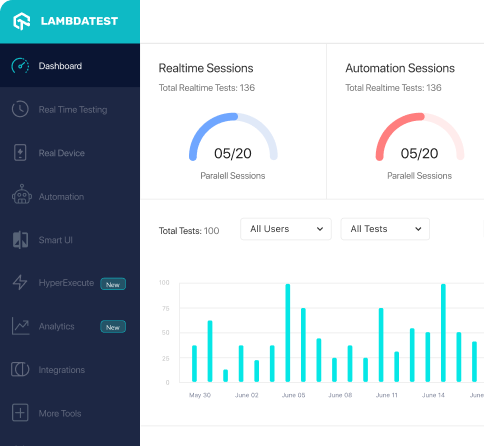How to use FaultType class of com.consol.citrus.integration.service.model package
Best Citrus code snippet using com.consol.citrus.integration.service.model.FaultType
Source:ObjectFactory.java
...51 public HelloResponse createHelloResponse() {52 return new HelloResponse();53 }54 /**55 * Create an instance of {@link FaultType }56 * 57 */58 public FaultType createFaultType() {59 return new FaultType();60 }61 /**62 * Create an instance of {@link HelloRequest }63 * 64 */65 public HelloRequest createHelloRequest() {66 return new HelloRequest();67 }68}...FaultType
Using AI Code Generation
1import com.consol.citrus.dsl.junit.JUnit4CitrusTestDesigner;2import com.consol.citrus.dsl.runner.TestRunner;3import com.consol.citrus.http.client.HttpClient;4import com.consol.citrus.message.MessageType;5import com.consol.citrus.testng.CitrusParameters;6import com.consol.citrus.validation.json.JsonMappingValidationCallback;7import com.consol.citrus.validation.json.JsonPathMessageValidationContext;8import com.consol.citrus.validation.json.JsonTextMessageValidationContext;9import com.consol.citrus.ws.client.WebServiceClient;10import org.springframework.beans.factory.annotation.Autowired;11import org.springframework.http.HttpStatus;12import org.testng.annotations.Test;13import java.util.Map;14public class SampleTest extends JUnit4CitrusTestDesigner {15 private HttpClient todoClient;16 private WebServiceClient todoClient;17 public void sampleTest() {18 http(builder -> builder.client(todoClient)19 .send()20 .post()21 .payload("<todoMessageRequest><text>Buy some Citrus fruits</text></todoMessageRequest>"));22 http(builder -> builder.client(todoClient)23 .receive()24 .response(HttpStatus.OK)25 .messageType(MessageType.XML)26 .payload("<todoMessageResponse><text>Buy some Citrus fruits</text></todoMessageResponse>"));27 soap(builder -> builder.client(todoClient)28 .send()29 "</ns0:todoMessageRequest>"));30 soap(builder -> builder.client(todoClient)31 .receive()32 "</ns0:todoMessageResponse>"));33 http(builder -> builder.client(todoClient)34 .send()35 .post()36 .payload("{'text':'Buy some Citrus fruits'}"));37 http(builder -> builder.client(todoClient)38 .receive()39 .response(HttpStatus.OK)40 .messageType(MessageType.JSON)41 .payload("{'text':'Buy some Citrus fruits'}"));42 soap(builder -> builder.client(todoClient)FaultType
Using AI Code Generation
1com.consol.citrus.dsl.testng.TestNGCitrusTestRunner runner = new com.consol.citrus.dsl.testng.TestNGCitrusTestRunner();2runner.java().initialize("com.consol.citrus.integration.service.model.FaultType");3com.consol.citrus.dsl.testng.TestNGCitrusTestRunner runner = new com.consol.citrus.dsl.testng.TestNGCitrusTestRunner();4runner.java().initialize("com.consol.citrus.integration.service.model.FaultType");5com.consol.citrus.dsl.testng.TestNGCitrusTestRunner runner = new com.consol.citrus.dsl.testng.TestNGCitrusTestRunner();6runner.java().initialize("com.consol.citrus.integration.service.model.FaultType");7com.consol.citrus.dsl.testng.TestNGCitrusTestRunner runner = new com.consol.citrus.dsl.testng.TestNGCitrusTestRunner();8runner.java().initialize("com.consol.citrus.integration.service.model.FaultType");9com.consol.citrus.dsl.testng.TestNGCitrusTestRunner runner = new com.consol.citrus.dsl.testng.TestNGCitrusTestRunner();10runner.java().initialize("com.consol.citrus.integration.service.model.FaultType");11com.consol.citrus.dsl.testng.TestNGCitrusTestRunner runner = new com.consol.citrus.dsl.testng.TestNGCitrusTestRunner();12runner.java().initialize("com.consol.citrus.integration.service.model.FaultType");13com.consol.citrus.dsl.testng.TestNGCitrusTestRunner runner = new com.consol.citrus.dsl.testng.TestNGCitrusTestRunner();14runner.java().initialize("com.consol.citrus.integration.service.model.FaultType");FaultType
Using AI Code Generation
1class FaultTypeTest {2 void testFaultType() {3 given()4 .soap()5 .when()6 .soap()7 .client("soapClient")8 .send()9 .then()10 .soap()11 .server("soapServer")12 .receive()13 .payload(new FaultType()14 .withFaultcode("soap:Server")15 .withFaultstring("Internal Server Error"));16 }17}18import com.consol.citrus.dsl.junit.JUnit5CitrusTest;19import com.consol.citrus.dsl.runner.TestRunner;20import com.consol.citrus.integration.service.model.FaultType;21import org.junit.jupiter.api.Test;22class MyJavaDslTest extends JUnit5CitrusTest {23 void testFaultType() {24 run(new TestRunner() {25 public void execute() {26 soap(builder -> builder.client("soapClient")27 .send()28 soap(builder -> builder.server("soapServer")29 .receive()30 .payload(new FaultType()31 .withFaultcode("soap:Server")32 .withFaultstring("Internal Server Error")));33 }34 });35 }36}Automation Testing Tutorials
Learn to execute automation testing from scratch with LambdaTest Learning Hub. Right from setting up the prerequisites to run your first automation test, to following best practices and diving deeper into advanced test scenarios. LambdaTest Learning Hubs compile a list of step-by-step guides to help you be proficient with different test automation frameworks i.e. Selenium, Cypress, TestNG etc.
LambdaTest Learning Hubs:
- JUnit Tutorial
- TestNG Tutorial
- Webdriver Tutorial
- WebDriverIO Tutorial
- Protractor Tutorial
- Selenium 4 Tutorial
- Jenkins Tutorial
- NUnit Tutorial
- Jest Tutorial
- Playwright Tutorial
- Cypress Tutorial
- PyTest Tutorial
YouTube
You could also refer to video tutorials over LambdaTest YouTube channel to get step by step demonstration from industry experts.
Most used methods in FaultType
Try LambdaTest Now !!
Get 100 minutes of automation test minutes FREE!!



